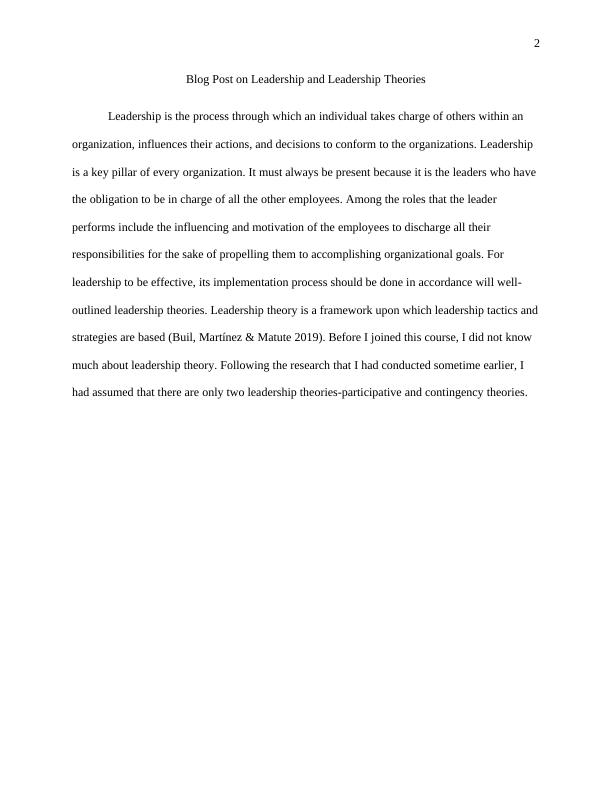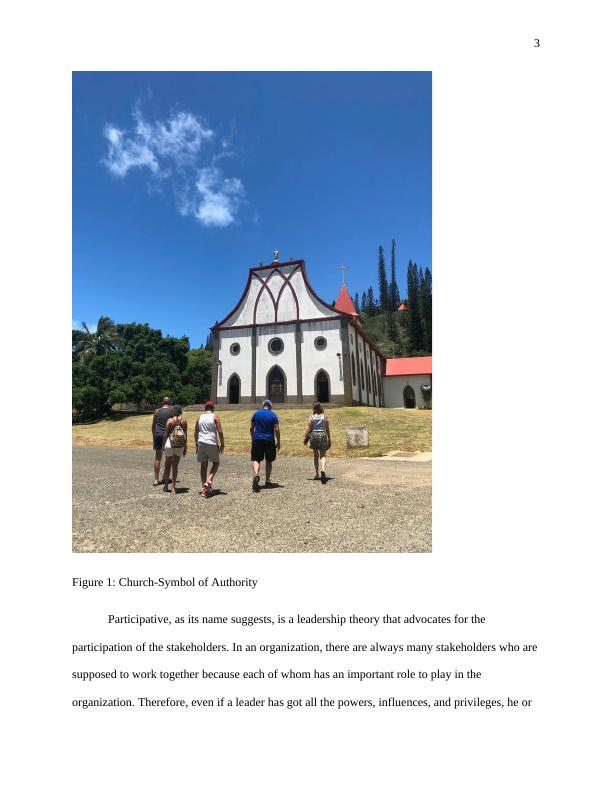Leadership and Leadership Theories
Review leadership theories, reflect on personal theories, and discuss aspects of leadership for personal and professional development.
19 Pages2218 Words37 Views
Added on 2023-01-18
About This Document
This blog post discusses the importance of leadership in organizations and explores different leadership theories such as participative, contingency, transformational, and behavioral theories. It highlights the key principles and strategies of each theory and their application in managing employees and achieving organizational goals.
Leadership and Leadership Theories
Review leadership theories, reflect on personal theories, and discuss aspects of leadership for personal and professional development.
Added on 2023-01-18
ShareRelated Documents
End of preview
Want to access all the pages? Upload your documents or become a member.
Leadership: Self Reflection
|8
|2590
|279
Leadership Philosophy
|10
|2730
|80
Leadership Essay 2022
|7
|2120
|43
Organizational Behavior and Leadership
|10
|2529
|87
Discussion Post on Leadership Attributes
|4
|776
|105
Leadership for Managers: Understanding the Concept of Leadership and Personal Qualities
|9
|2563
|448




